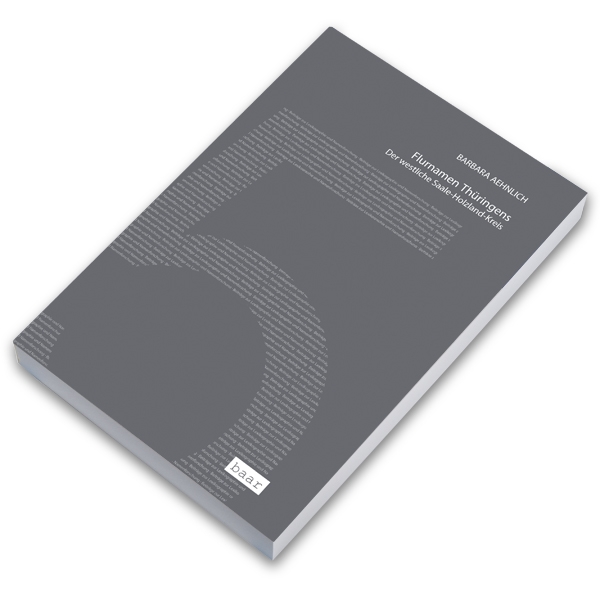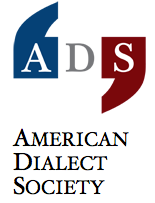http://respublikarso.org/books/1172-vyshel-v-svet-vtoroy-tom-toponimii-yuzhnoy-osetii.html

За годы независимости Южной Осетии удалось добиться многого, и не только в плане государственного строительства и международного признания. Есть достижения и в политической, экономической, социальной, культурной, научной, спортивной сферах... В этом ряду несомненным прорывом следует назвать и работу в плане издательской деятельности. Первые десять лет независимости, в условиях тотального безденежья, книги выходили от случая к случаю, хотя издательская комиссия при министерстве информации и печати РЮО функционировала. С начала нулевых ситуация стала исправляться, а уже после 2008 года, когда издательская деятельность не без труда была реанимирована и поставлена «на рельсы», на издание книг стали выделяться более реальные суммы. Причем, финансовые средства на издательскую деятельность стали выделяться не только Госкомитету информации, но и ряду других министерств и ведомств. В итоге стали выходить книги интересные, разные по тематике. Дождались своего часа издания, появление которых в советский период не представлялось возможным. Это, прежде всего, касается книг по осетиноведению. В связи с этим вспоминается случай с «Историей Южной Осетии», подготовленной к печати еще в начале 70-х годов прошлого века. Вполне безобидный, согласованный и разрешенный к изданию текст был, темне менее, запрещен прямонавыходеизтипографии.
Но с приходом международного признания, настали новые времена, когда запрет извне перестал иметь место. К тому же появились средства на осуществление ранее казалось «фантастичных» проектов. Это касается вопросов осетиноведения, этногенеза осетин, времени появления осетин в Закавказье, грузино-осетинских отношений,событий начала 20-х годов прошлого века и т.д. Среди них сборники трудов Ю. Гаглойти и Г. Тогошвили, сборник «Грузинские летописцы и историки о Южной Осетии и Грузии», первые тома «Толкового словаря осетинского языка» и еще много необходимых изданий.
В 2013 году увидел свет первый том «Топонимии Южной Осетии». О нем газета уже писала, отметив, что это фундаментальный, образцово выполненный научный труд, подготовленный по всем предписанным канонам. На днях увидел свет второй том этого грандиозного научного свода. Но в начале, по обыкновению, следует сказать об авторах, кто поспособствовал выходу в свет подобного исследования.
Замира Дмитриевна Цховребова и Юрий Альбертович Дзиццойты известные в Осетии ученые-филологи, кандидаты наук, доценты, заслуженные деятели наук РЮО. Первая из них также является лауреатом Государственной премии им К.Л. Хетагурова. Оба много и плодотворно трудятся и трудились в Юго-Осетинском Научно-исследовательском институте. Являются авторами многочисленных научных трудов, большинство из которых посвящены изучению осетинского языка.
ЗамираДмитриевнакакученыйсостоялась достаточно рано. Уже в 25 лет ею была защищена кандидатская диссертация и началась работа в научных центрах Южной Осетии. В сферу научных интересов исследователя вошли вопросы, касающиеся синтаксиса, ономастической и апеллятивной лексики осетинского языка. Изучала она также осетинские фамилии, писала рецензии на труды своих коллег, очерки о жизни и научно-творческой деятельности видных представителей осетинской интеллигенции, занималась переводами. Среди изданных ею монографий– «Топонимия Южной Осетии в письменных источниках», «Осетины в Южной Осетии и Грузии в XIX-XXвв.»... Первую из них, написанную в советский период, ожидала нелегкая судьба. Тбилиси задержал выпуск книги на целых пять лет, требуя компромиссов и уступок. К сожалению, тогда это было обычной практикой. Возможно, по этой причине многие рукописи З.Цховребовой не изданы до сих пор… Говоря же о последних трудах З.Цховребовой необходимо сказать, что вместе с А. Цуциевым ей удалось поучаствовать во впечатляющем проекте по составлению и изданию географической карты единой Осетии. Она признана классической и широко востребована.
Однако, вне всякого сомнения, главным достижением ученого следует считать участие в составлении четырехтомного «Толкового словаря осетинского языка» и трехтомной «Топонимии Южной Осетии». Оба фундаментальных труда выполнены в стенах ЮОНИИ. Пока вышли первые тома, хотя работа фактически была завершена достаточно давно. Издание в свое время тормозила АН Грузии, затем не оказалось нужного финансирования... Кроме того, для выпуска этих трудов местной типографской базы было недостаточно, и тома взялось издавать российское издательство «Наука». Все эти задержки привели к тому, что большинство составителей Толкового словаря не дожили даже до выхода первого тома. Замире Дмитриевне удалось порадоваться первой книге многотомника, но вот вручения премии им. К. Хетагурова, которой этот труд был удостоен, ей дождаться, увы, не довелось…
Второй составитель – Юрий Дзиццойты – это новое поколение осетинских языковедов. Когда Замира Дмитриевна начала полевой сбор материала для «Топонимии Южной Осетии», Юрию Альбертовичу было всего четыре (!) года. Но это не помешало двум незаурядным ученым создать продуктивный и успешный авторский тандем. Ю. Дзиццойты также достаточно рано проявил себя, много печатается, пользуется уважением и авторитетом среди коллег. Среди его опубликованных трудов следует назвать монографии «Нарты и их соседи», «Чисанский диалект осетинского языка»... Готовятся издания по самым разным направлениям осетинского языкознания. Кроме того, Ю. Дзиццойты активно занимается общественной деятельностью, являлся депутатом Парламента РЮО нескольких созывов, входит в различные комиссии по осуществлению различных политических и культурных программ.
Как показала практика, сотрудничество в проекте двух ярких представителей осетинской науки, относящихся к разным поколениям, оказалось результативным и вполне успешным. Но как показала история, для завершения работы над таким массивом, доведения ее до логического конца, одной человеческой жизни может не хватить. Сейчас трудно даже определить, что было бы со сборником топонимов, если бы им вплотную в свое время не занялся Юрий Дзиццойты.
Говоря о составе и структуре словаря Ю. Дзиццойты пишет: «Настоящее издание является словарем географических названий или топонимов Южной Осетии. Работу над его составлением Замира Дмитриевна начала в 1964 г. И не прекращала вплоть до своей кончины. В результате собран огромный материал, оставшийся на карточках. По своему богатству топонимия Южной Осетии (с учетом немногочисленности ее населения – всего около 100 тыс. человек, а также незначительности ее территории, составляющей всего 3,9 тыс. км2) не уступает ни одному региону мира. Здесь собрано свыше 16 тыс. топонимов, при том, что в соседней Северной Осетии, вдвое превосходящей Южную Осетию по территории и в семь раз по количеству населения, собрано и опубликовано всего около 8,5 тыс. топонимов».
Поскольку в РЮО четыре административных центра, топонимы также поделены на четыре части. Ну а внутри района материал разделен по ущельям и в целом отражает деление южных осетин на отдельные общества.
Вполне ожидаемо, что первый том включает топонимы Дзауского района (7 тысяч топонимов) исторического центра Южной Осетии. Второй том, о котором, собственно, иидет сейчас речь, объединяет топонимы Знаурского и Цхинвальского районов. Третий том будет полностью посвящен Ленингорскому району. Отдельные главы каждого тома подразделены в свою очередь тоже на главы, в которых собраны топонимы отдельных ущелий. Уже внутри самих глав топонимы подразделены по географическому принципу: перевалы, ущелья, овраги, горы, хребты, пещеры, возвышенности, холмы, реки, родники, минеральные источники, озера, водопады, пашни, луга, пастбища, стоянки, населенные пункты, святилища, башни, дороги и т.п.
В предисловии к сборнику говорится также о структуре словарных статей, источниках топонимического материала, истории сбора и изучения топонимии Южной Осетии, топонимии как источнике этнической истории Южной Осетии, лингвистической природе топонимов Южной Осетии. Говоря о последнем разделе, здесь представлена схема описания географических объектов, географические термины и индикаторы, классификация терминов по семантическим признакам, лексические архаизмы и инновации, заимствованная лексика, фонетические особенности, словообразовательная структура, диалектная лексика и топонимия Южной Осетии. Кроме собственно юго-осетинских топонимов в словарь вошла также топонимия осетинских поселений трех провинций Грузии – Рачи, Картли и Арагвинского ущелья. По этому поводу говорится, что «перед осетинской наукой также стоит задача фиксации и сохранения материалов, связанных с проживанием осетин за пределами Республики».
В предисловии ко второму тому Ю. Дзиццойты особо отмечает, что материалы, собранные З.Д. Цховребовой, были дополнены и проверены в полевых условиях автором-составителем.Прилагаетсядополнительный список информаторов-корреспондентов. Также продолжена работа по пополнению словника из письменных источников. Словарь адресуется для специалистов – филологов, фольклористов, этнографов, историков, но будет с интересом воспринят всеми теми, кто интересуется историей и культурой Южной Осетии. Остается также добавить, что ответственным редактором книги является Т.К. Салбиев, рецензентами – доктор филологических наук Н.Я. Габараев и кандидат филологических наук З.А. Битарти. Второй том сборника издан тиражом 1000 экземпляров.
Батрадз Харебов






















